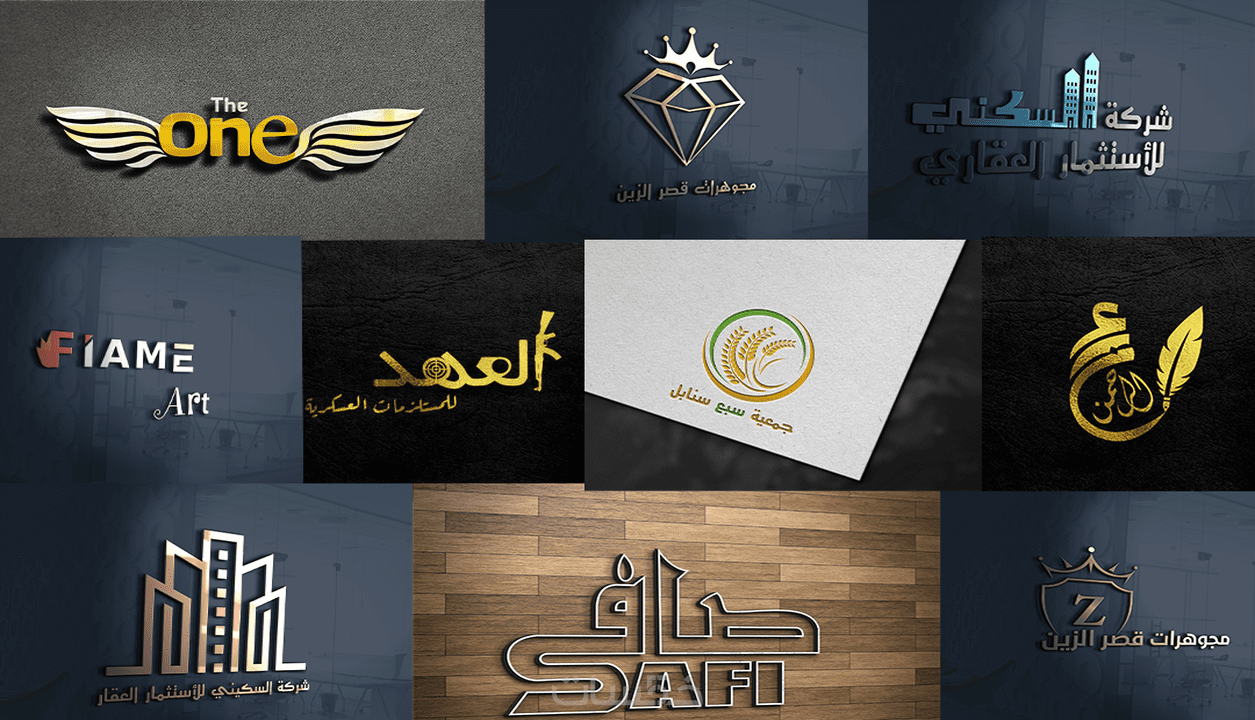What is the definition of an engineer?
The document provides the definition of an engineer as follows:
"Profession in which knowledge of mathematical and natural sciences gained by study, experience, and practice is applied with judgment to develop ways to utilize, economically, the materials and forces of nature for the benefit of mankind."
What are the responsibilities of an engineer?
2. Welfare of the society
3. Environmental concerns
4. Abide by laws, regulations, standards, and ethical code
5. Produce products/devices that have the following characteristics:
What is the value of the engineering profession?
Engineering: The Art of Problem-Solving
The Origin of ‘Engineer’
The term “Engineer” originates from the Latin “Ingeniator,” which embodies the essence of ingenuity and craftsmanship. Engineering, as defined by ABET, is the profession that judiciously applies mathematical and natural sciences to develop ways to utilize materials and forces of nature for the benefit of mankind.
The Engineer and The Scientist: A Comparative Study
Both engineers and scientists are deeply educated in mathematical and natural sciences. However, their paths diverge in application. Scientists seek to expand knowledge, while engineers apply this knowledge to create practical solutions.
The Unsung Heroes: Engineering Support Personnel
Engineers are often supported by a team of technologists, technicians, and craftsmen. Each member plays a crucial role in bringing engineering projects to fruition, from planning and construction to practical tasks like drafting and surveying.
Craftsmanship in Engineering
Craftsmen are the skilled artisans in the engineering world, translating designs into tangible products. Their expertise is typically honed through hands-on training, with education often not extending beyond high school.
A Glimpse into Engineering History
Engineering history is marked by significant milestones, from the Pre-Scientific Revolution to the Information Revolution. Each era brought forth advancements that reshaped the world, such as the steam-powered machines of the Industrial Revolution and the microelectronics of the Information Revolution.
Engineering in Ancient Civilizations
The ancient civilizations of Mesopotamia and Egypt were the cradle of engineering. Mesopotamians introduced innovations like the wheeled cart, while Egyptians excelled in planning and construction, advising kings and pioneering early surveying techniques.
The Industrial and Information Revolutions
The Industrial Revolutions transformed engineers from practical artists to scientific professionals, introducing steam engines and mass production. The Information Revolution further evolved engineering with the advent of microelectronics, telecommunications, and computers.
The Multifaceted Roles of Engineers
Engineers engage in diverse functions, from research and development to design and production. They are integral to constructing infrastructure, operating utilities, and managing technological industries.
The Ethical and Social Responsibilities of Engineers
Engineers bear the responsibility for public safety, societal welfare, and environmental concerns. They must adhere to laws, regulations, standards, and ethical codes while delivering cost-efficient, durable products.
The Value of the Engineering Profession
Engineers are the architects of civilization, providing essential infrastructure, communication links, and products that enhance our lives.
The Legal Framework of the Engineering Profession
Engineering is governed by codes and standards that ensure public safety and performance, with historical examples like Hammurabi’s code and modern ethical guidelines.
Engineering Majors: A Spectrum of Disciplines
The field of engineering encompasses various majors, from traditional disciplines like Civil and Mechanical Engineering to non-traditional fields like Bioengineering and Energy Engineering.
The Functions of Engineering
Engineering functions span research, development, design, production, construction, operations, sales, and management, each contributing uniquely to the profession’s impact.
The Art of Effective Study: Enhancing Your Learning Experience
How can I be a good listener?
What are the guidelines for effective studying?
What are the hindrances to problem solving?
In the fast-paced world of engineering, mastering the art of effective study is crucial for success. Whether you're a freshman or a seasoned student, understanding the fundamentals of effective studying can significantly impact your academic journey. In this article, we will delve into the essential components of effective study techniques, including the art of being a good listener, the significance of effective studying, and the intricacies of information processing and memory retention.
How to Be a Good Listener
To truly benefit from lectures and discussions, it's imperative to cultivate the skill of active listening. Here are some key strategies to enhance your listening skills:
Maintain Natural Eye Contact and Posture:
Engage with the speaker by maintaining natural eye contact and displaying an alert and interested posture. Arriving a few minutes early to class and reviewing your notes beforehand can also help you stay focused.
Minimize Distractions:
Ignore external distractions such as side conversations and background noise. Taking notes on the speaker's key points and preparing questions can further solidify your understanding.
Utilize the Cornell Note-Taking Method:
This proven note-taking technique can enhance your retention and comprehension of lecture material. Check out this video for a detailed guide on the Cornell Note-Taking Method.
The Significance of Effective Studying
Effective studying is not just about spending hours with your books; it's about optimizing your learning process. Here are some guidelines to study effectively:
Connect Class Work to Long-Term Goals:
Understanding the relevance of your coursework to your long-term career goals can provide motivation and context for your studies.
Time Management:
Implementing a structured schedule can help you manage your time effectively. Creating a weekly master plan and a semester calendar can promote balance in your life and prevent last-minute cramming. For a comprehensive understanding of scheduling, refer to this video.
Information Processing and Memory Retention:
Our senses play a crucial role in information processing and memory retention. Visual information tends to fade quickly, while auditory input can linger for several seconds. Understanding these mechanisms can aid in optimizing your study habits.
The SQ3R Study Strategy
The SQ3R method, which stands for Survey, Question, Read, Recite, and Review, is a powerful tool for effective studying. Here's a breakdown of the SQ3R strategy:
Survey:
Before diving into a chapter, survey the title, introduction, summary, and end-of-chapter questions to gain an overview of the material.
Question:
Formulate questions based on the headings and subheadings of the chapter to guide your reading.
Read and Recite:
As you read each section, look for answers to your questions, and recite the information to reinforce your understanding.
Review:
Regularly review your questions and answers to refine your mental organization and solidify your memory of the material. For a detailed explanation of the SQ3R method, watch this informative Video.
Overcoming Hindrances to Problem Solving
Engineering students often encounter mental barriers that hinder effective problem-solving. One common obstacle is fixation or mental set, which can impede creative thinking. To overcome such hindrances, it's essential to engage in activities that challenge your problem-solving abilities. For an engaging problem-solving activity, refer to the "Figure Nine Dots Problem" and "Figure Six Matches Problem" in the lecture material.
Tips for Test-Taking Success
When it comes to taking tests, preparation and strategy are key. Here are some valuable tips for test-taking success:
- Arrive on Time: Punctuality is crucial for a stress-free test-taking experience.
- Memory Dump: Before diving into the test, jot down key formulas or concepts for quick reference.
- Budget Time Wisely: Allocate time for each section of the test to ensure that you can answer all questions.
- Practice Relaxation: Implement relaxation techniques to alleviate test anxiety and enhance focus.
- Utilize All Available Time: Use all the time provided for the test to review your answers and make any necessary revisions. For a comprehensive guide on test-taking strategies, watch this insightful video.
In conclusion, mastering the art of effective study is a multifaceted endeavor that encompasses active listening, strategic studying, and adept problem-solving skills. By implementing these techniques and strategies, engineering students can optimize their learning experience and pave the way for academic success.
Mastering the Engineering Design Process: A Comprehensive Guide
Introduction
As an aspiring engineer, understanding the fundamental principles of engineering design is crucial for success in the field. In this comprehensive guide, we will delve into the intricate process of engineering problem-solving and design, exploring the essential steps and methodologies that form the backbone of this discipline.
The Nature of Engineering Design
Engineering work encompasses meticulous planning and analysis in its initial stages, but at its core lies the design process. The landscape of engineering design has evolved to become more diverse and demanding, necessitating a higher degree of specialization and collaboration. In solving complex problems, multiple engineers contribute their specialized knowledge and organizational competence to arrive at effective solutions.
Engineering Design Method
The engineering design method comprises a series of steps or phases that form the framework for problem-solving. These typically include the identification of the problem, gathering necessary information, searching for creative solutions, transitioning from ideation to preliminary designs, evaluating and selecting the preferred solution, preparing reports, plans, and specifications, and finally, implementing the design.
Identification of the Problem
The initial stage of problem-solving is the identification of the problem, a critical phase that lays the foundation for the entire design process. A precise definition of the problem is paramount, as an incorrect or biased definition can lead to wasted time and inappropriate solutions. Pearson emphasizes the significance of accurately defining the problem, stating that a problem properly defined is a problem partially solved. Objectivity and avoidance of unnecessary constraints are key principles in this phase.
Gathering Needed Information
The nature of the problem dictates the type of information required for its resolution. This phase involves the meticulous gathering and evaluation of existing information, often supplemented by additional measurements. Engineers frequently consult literature to leverage the knowledge accumulated by others in related domains.
Searching for Creative Solutions
The development of innovative ideas, products, or devices is often the result of creativity and innovation. Various operational techniques such as brainstorming, checklists, attribute listing, forced relationship technique, and morphological analysis can be employed to stimulate the generation of original ideas.
- Brainstorming Brainstorming sessions, involving a diverse group of individuals, are conducive to the generation of a wide array of ideas, including seemingly impractical ones. The inclusion of members with varied backgrounds enriches the ideation process.
- Checklists Checklists serve as a structured tool to explore different design possibilities, prompting the examination of various points and areas.
- Attribute Listing This technique involves isolating and listing all major attributes of a product or idea, followed by the generation of ideas on how each attribute could be modified. Every idea, regardless of its practicality, is documented, leading to potential improvements in the design.
- Forced Relationship Technique By forcing a relationship between seemingly unrelated ideas or products, this technique initiates the idea-generating process. Selecting a fixed element and establishing a connection with a randomly chosen element can yield novel insights.
- Morphological Analysis This method involves defining the problem in terms of its dimensions or parameters and devising a model to visualize every potential solution. For problems with multiple parameters, a matrix is employed to systematically explore the various attributes and their potential combinations.
- Stepping from Ideation to Preliminary Designs This phase entails the refinement of ideas, discarding unfeasible concepts, and molding promising ideas into workable plans and designs. Engineers rely on analytical or mathematical models, simulation models, and physical models to facilitate this process.
- Evaluation and Selection of Preferred Solution The iterative process of feedback, modification, and evaluation culminates in the selection of the preferred solution. Factors such as safety, cost, reliability, and consumer acceptability are pivotal in the evaluation, often involving ranking based on predetermined criteria.
- Preparation of Reports, Plans, and Specifications Upon the selection of the preferred design, effective communication of the design is essential. Engineering reports or a set of plans and specifications serve as the medium to convey the design to stakeholders, clients, or supervisors.
- Implementation of the Design The final phase encompasses the realization of the design through the production or construction of a physical device, product, or system. Detailed planning and supervision by engineers are imperative to ensure the successful execution of the engineered projects.
Conclusion Mastering the engineering design process is a multifaceted endeavor that demands a blend of technical expertise, creativity, and systematic problem-solving. By embracing the principles and methodologies outlined in this guide, aspiring engineers can navigate the complexities of design with confidence and proficiency.
Navigating Your Engineering Career: A Comprehensive Guide for Freshmen
What are some myths in career exploration?
What are the different resume formats mentioned in the article?
What is the purpose of the interview according to the article?
Introduction
As a freshman engineering student, embarking on a journey to explore and establish a successful career is a crucial step. This comprehensive guide is designed to provide valuable insights into career exploration, resume writing, interview preparation, and the Co-Op program. By delving into these essential aspects, you can gain a deeper understanding of the strategies and tools necessary to thrive in the engineering field.
Career Exploration
Making Informed Decisions Embarking on a career path is a decision that can significantly impact your future. It is essential to approach this decision with care and thorough exploration. Rather than succumbing to external pressures, such as parental or peer influence, it is crucial to select a career that aligns with your personal interests and talents. By doing so, you can pave the way for a fulfilling and successful professional journey.
Investing in Your Career Taking full advantage of available resources and seeking guidance from instructors can provide valuable insights and support as you navigate your career exploration. It is important to ask pertinent questions and actively engage in the process of understanding the various career options available to you. Dispelling myths surrounding career exploration, such as the belief in a single "right" job or the necessity of choosing a career solely based on job availability, is essential in making informed decisions.
Resume Writing
Crafting Your Professional Identity Your resume is a powerful tool that encapsulates your professional identity. It serves as an advertisement for your skills and experiences, aiming to capture the attention of potential employers. Understanding the primary function of a resume, which is to secure an interview by showcasing your qualifications, is crucial. Employers typically spend a brief amount of time reviewing resumes, emphasizing the importance of conciseness and relevance in its content.
Choosing the Right Format Selecting the appropriate resume format is pivotal in effectively presenting your qualifications. The chronological resume format, which highlights your employment history in a time-based sequence, is suitable for individuals with a consistent work history. Conversely, the functional resume format emphasizes skills and achievements, making it ideal for career changers or recent graduates. Tailoring the format to align with your unique experiences and career goals can significantly enhance the impact of your resume.
Elements to Include In crafting your resume, certain key elements should be incorporated to provide a comprehensive overview of your qualifications. These include contact information, a clear job objective, educational background, relevant honors and achievements, computer skills, and pertinent coursework. By adhering to these guidelines, you can create a compelling and informative document that effectively represents your professional profile.
Interview Preparation Navigating the Interview Process Preparing for an interview involves a multifaceted approach aimed at showcasing your skills, goals, and personality to potential employers. Honest and thoughtful responses to interview questions are essential in conveying your suitability for the position. Additionally, conducting thorough research on the company, including its products, management structure, and financial standing, is crucial in demonstrating your genuine interest and preparedness.
Optimizing Your Interview Performance From phone interviews to secondary interviews, each stage of the process requires meticulous preparation. Paying attention to your tone of voice, maintaining a quiet and distraction-free environment, and demonstrating enthusiasm are vital components of a successful phone interview. Subsequently, in a secondary interview, emphasizing your skills, abilities, and the value you can bring to the organization is paramount. By adhering to these strategies, you can enhance your interview performance and increase your chances of securing the desired position.
Co-Op Program Balancing
Theory and Practice The Co-Op program at ASU offers undergraduate engineering students the opportunity to integrate practical experience with classroom learning. With three mandatory cycles of Co-Op, totaling 12 weeks, students can gain invaluable real-world exposure before graduation. This practical experience equips graduating engineers with enhanced job prospects and a deeper understanding of their chosen field.
Conclusion Navigating the complexities of career exploration, resume writing, interview preparation, and the Co-Op program is a pivotal aspect of a freshman engineering student's journey. By leveraging the insights and strategies outlined in this guide, you can embark on your professional path with confidence and clarity. Embracing the principles of informed decision-making, strategic resume crafting, interview optimization, and practical experience will undoubtedly pave the way for a successful and fulfilling engineering career.


.jpg)
.jpg)
.jpg)









1 Comments
very nice illustration
ReplyDeleteYour opinion is important for us.